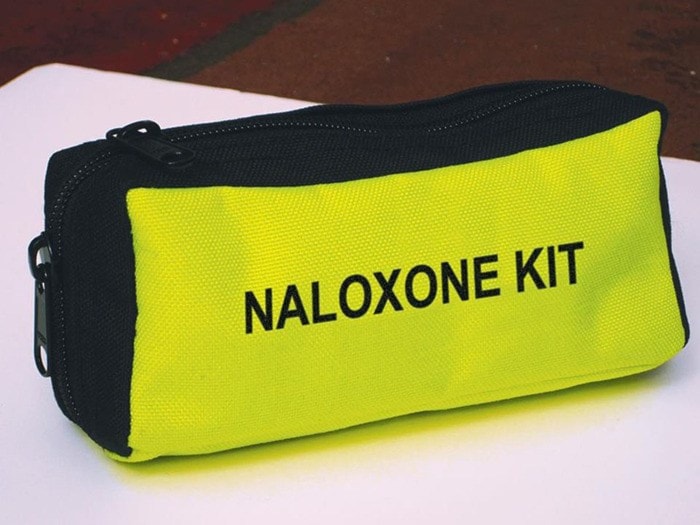As year end numbers for illicit drug deaths in the province have come in showing record numbers, Castlegar firefighters have been acquiring the skills they need to treat suspected opioid overdoses.
Twenty-six members of the Castlegar Fire Department recently participated in a four-hour Naloxone EMR/FR endorsement training session through BC Emergency Health Services. The firefighters will now be carrying Naloxone — a medication used to counteract opioid overdoses — in their medical kits. The department posted a statement on their Facebook page saying, "Our community is not immune to the challenges cities across BC and the rest of Canada are facing and we'll do everything we can to be there for our community in their time of need."
Deputy fire chief Sam Lattanzio explained why the training was a priority for the Castlegar department, "For the safety of our first responders — knowing some of the risks that are associated particularly with fentanyl, and other things. Also, if we are at an incident where there is a suspected opioid overdose and we are first on scene, we are trained on how to handle that sort of situation."
The training was very thorough and included both practical and theory components. Castlegar firefighters have run into opioid overdoses in the past as they are frequently first on the scene arriving even before an ambulance can. "It doesn't happen often, but it could happen, and it has happened, where we were first on scene," said Lattanzio.
Summary of coroner's report on 2016 drug deaths
Statistics released by the BC Coroners Service show 914 illicit drug overdose deaths in the province during 2016, that is up by 79.2 per cent over the 2015 figure of 510. The problem doesn't seem to be abating as December was the highest month with 142 deaths recorded.
There were 156 deaths within the Interior Health Authority in 2016, more than double the 2015 total of 63. The Kootenay Boundary service delivery area, which includes the area from Salmo to Nakusp, to Rossland and over to Rock Creek, reported 10 deaths. A break down by city is not available because the numbers for the area are so small that to release the deaths by city might constitute a breach of privacy.
The coroners report also analyzed the death rates per capita and the Kootenay Boundary service area of Interior Health had a rate of 12.9 per 100,000 residents, much lower than the overall rate of 21 per 100,000 for Interior Health, the rate for which was second only to the Vancouver Coastal Health Authority at 21.7.
